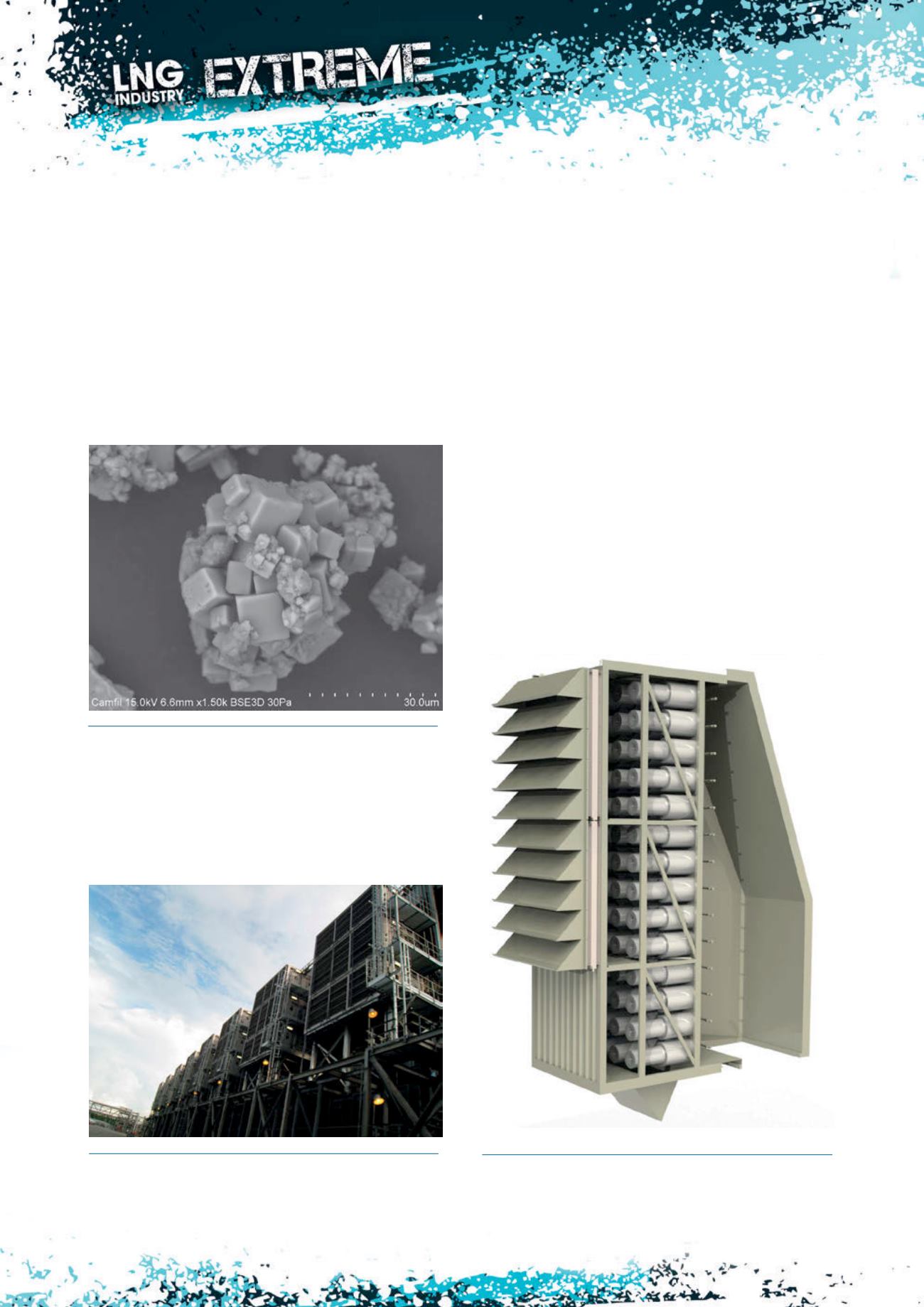
54
Washing, both on and offline, is possible, but where a
more thorough offline wash is required, can take 12 – 24 hr as
the machine is cooled, washed, inspected, dried and
restarted.
Given the cost of lost production, not to mention the
prospect of empty LNG carriers expensively idle at anchor,
unplanned outages on an LNG compressor train can border
on the catastrophic.
Atlantic storm
The value of suitably specified air inlet filtration equipment is
illustrated by an LNG compressor train installation located on
an Atlantic coast. Featuring four compressor trains with three
banks of six and one bank of eight machines, a total of 26 gas
turbines are operating at this large installation, which loads a
ship every other day.
The original turbine OEM design specified that the units
be equipped with single-stage pulse filtration systems.
Already relatively low-grade filters on installation, testing the
filter quality revealed them to be within the range of F7 class
filtration after just one year of operations.
Observing a loss of efficiency across the compressor
trains due to contamination loading, the operators were
forced to carry out regular online and offline washing on the
compressor trains. However, in this particular case, the
customer also had significant corrosion both on the
compressor and the gas turbine parts of the train. This issue
became so significant that, across the 26 machines of the
installation, at least one rotor was being refurbished at all
times. Indeed, in this example, rotor operational life between
major overhauls was being measured in months rather than
years.
Faced with the prohibitive costs of a fully-manned
workshop replacing rotors on a continuous basis and the
associated loss of production capacity, after several years of
operations in this mode, the owner decided to reconsider the
filtration solution and look at high performance alternatives.
Figure 1.
As salt particles are deliquescent, the right
combination of pressure drop and humidity can lead to them
being re-entrained past the filters into the compressor, regardless
of the efficiency of the filter. To prevent that, it is important to
look at the water drainage capacity of a filtration system or the
hygroscopic properties of the filter media, and to include multiple
stages of filtration to ensure that all of the moisture content can
be coalesced and drained efficiently.
Figure 2.
LNG projects are often located in harsh environments
with the double burden of salt-laden coastal or offshore
environments, and industrial neighbours with high dust levels and
the presence of hydrocarbons.
Figure 3.
The single-stage pulse system that was originally
supplied offered F7 efficiency according to EN779:2012 standard.
Unable to stop the various contaminants efficiently, the turbine
and compressor suffered from significant corrosion and fouling.


